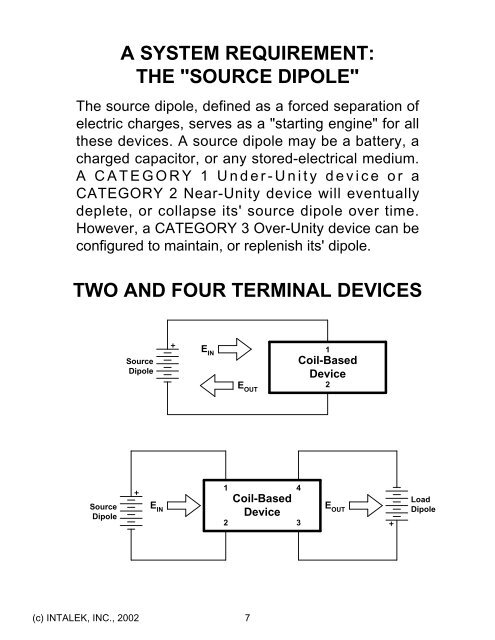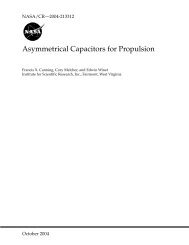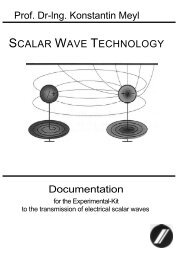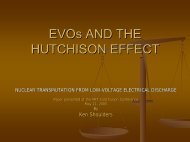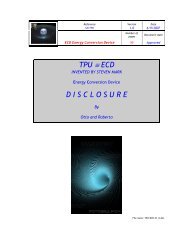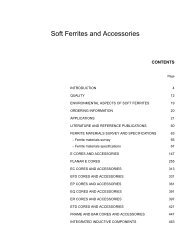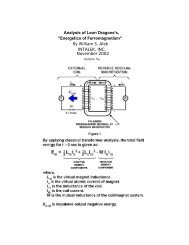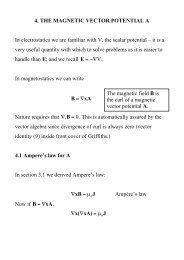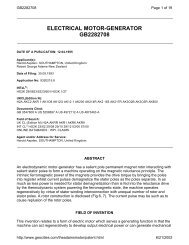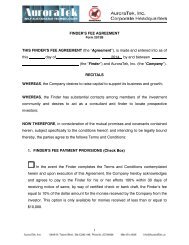How to Build Solid-State Electrical Over-Unity Devices ... - Intalek, Inc.
How to Build Solid-State Electrical Over-Unity Devices ... - Intalek, Inc.
How to Build Solid-State Electrical Over-Unity Devices ... - Intalek, Inc.
Create successful ePaper yourself
Turn your PDF publications into a flip-book with our unique Google optimized e-Paper software.
A SYSTEM REQUIREMENT:<br />
THE "SOURCE DIPOLE"<br />
The source dipole, defined as a forced separation of<br />
electric charges, serves as a "starting engine" for all<br />
these devices. A source dipole may be a battery, a<br />
charged capaci<strong>to</strong>r, or any s<strong>to</strong>red-electrical medium.<br />
A CATEGORY 1 Under-<strong>Unity</strong> device or a<br />
CATEGORY 2 Near-<strong>Unity</strong> device will eventually<br />
deplete, or collapse its' source dipole over time.<br />
<strong>How</strong>ever, a CATEGORY 3 <strong>Over</strong>-<strong>Unity</strong> device can be<br />
configured <strong>to</strong> maintain, or replenish its' dipole.<br />
TWO AND FOUR TERMINAL DEVICES<br />
Source<br />
Dipole<br />
Source<br />
Dipole<br />
E IN<br />
E IN<br />
(c) INTALEK, INC., 2002 7<br />
1<br />
2<br />
E OUT<br />
Coil-Based<br />
Device<br />
1<br />
Coil-Based<br />
Device<br />
4<br />
3<br />
2<br />
E OUT<br />
Load<br />
Dipole


